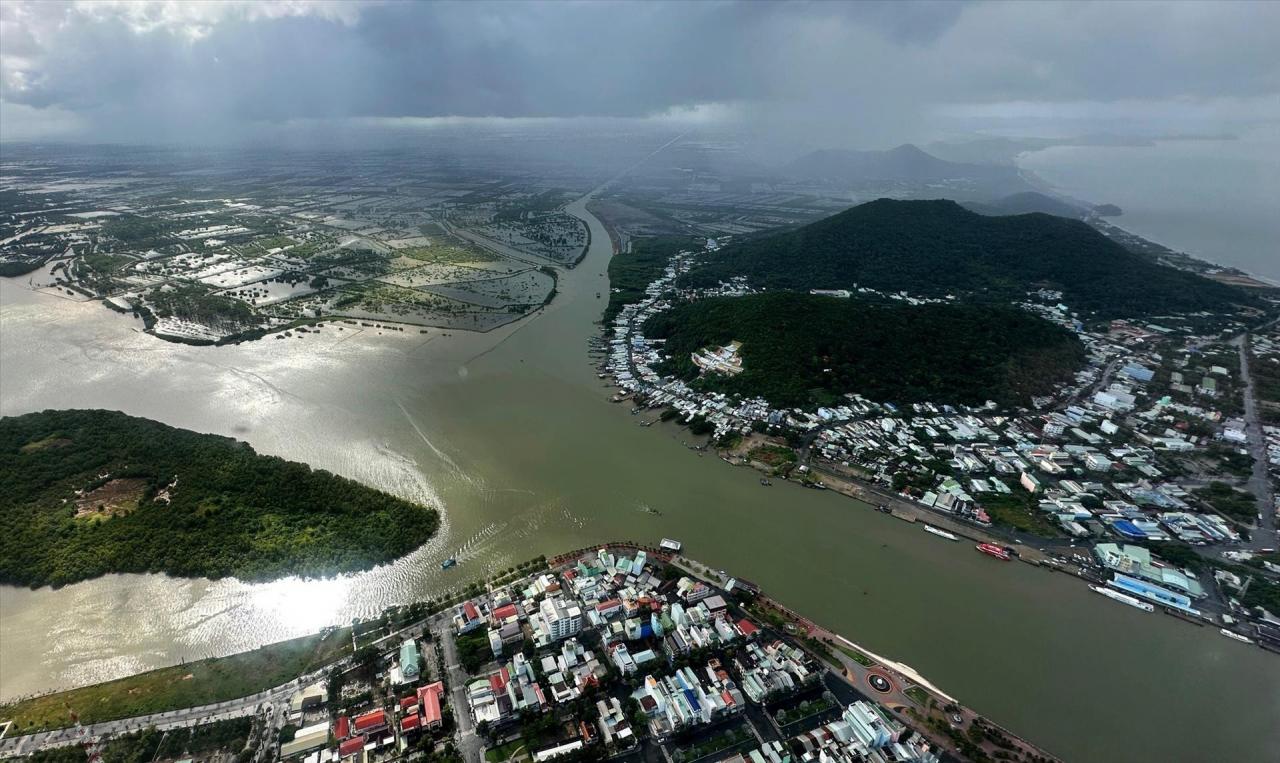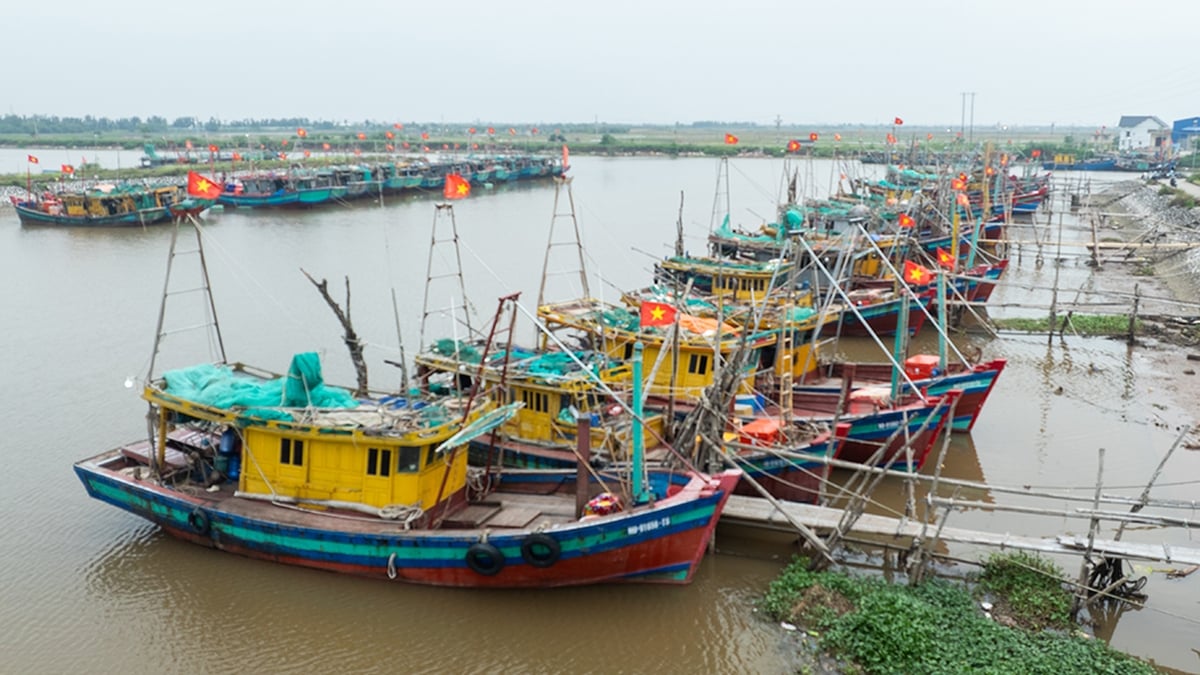After the New Global Financial Compact Summit in late 2023, Vietnam is accelerating green transformation, digital transformation, developing a knowledge economy , circular economy, and achieving the goal of net zero emissions by 2050.
To realize these commitments, Vietnam has been completing many related tasks such as the legal framework for green growth, digital transformation; accelerating energy transition according to the Power Plan VIII. These tasks, in fact, began nearly 3 years ago, when at the COP26 Conference in the UK, Vietnam committed to achieving PTR0 by 2050, reducing methane emissions by 30% by 2030, gradually reducing and eliminating coal power in the period of 2030-2040, and protecting forests. Vietnam must accelerate and further strengthen the implementation of the Green Growth Strategy, concretizing the contents of the Strategy in the Green Growth Action Plan towards creating a premise for building a "Roadmap for realizing green growth associated with socio-economic development with a long-term vision to achieve the goal of net zero emissions by 2050".

The embankment protects residential areas at the river mouth of Kien Giang province. Photo: VNA
COP26, attended by 197 countries and territories, produced the strongest commitments and roadmaps to reduce greenhouse gas emissions ever. Of these, 136 countries committed to achieving net zero emissions by mid-century. More than 100 countries and territories committed to ending and reversing deforestation. Thirty-four countries and several banks and financial institutions committed to increasing support for more sustainable projects and to phase out international financing for “the fossil fuel energy sector without mitigation technologies by the end of 2022, except in limited and clearly defined circumstances consistent with the 1.5°C warming limit and the Paris Agreement objectives.” More than 40 countries pledged to phase out coal. Vietnam is among the most vulnerable countries to climate change in the world, ranked 127 out of 182 countries by the Notre Dame Global Climate Change Adaptation Initiative (ND-GAIN) and 13 out of 180 countries by the Germanwatch Global Climate Risk Index 2000-2021. Vietnam is also not well prepared to cope with extreme events, hotter temperatures and rising sea levels (ranked 91 out of 192 countries by the ND-GAIN Readiness Index). Assuming that Vietnam’s average temperature increases at a similar rate to the global average, by 2080-2090, the average temperature could increase by 1–3.4°C compared to the baseline in the 1986–2005 period, with a larger range between maximum and minimum temperatures. Increasing extreme heat is likely to amplify impacts on human health, livelihoods, and ecosystems. According to the World Bank, low-lying coastal areas and river basin deltas in Vietnam are highly vulnerable to sea level rise. Without effective adaptation measures, an estimated 6 million to 12 million people could be negatively impacted by coastal flooding between 2070 and 2100, depending on global emissions trajectories. Climate change disrupts Vietnam’s economy Climate change is exacerbating the already significant risks posed by flooding. By 2035–2044, several million more people will be affected by severe flooding each year. Climate change is increasingly disrupting Vietnam’s economy, and the costs are starting to slow growth. According to calculations by the World Bank research team, Vietnam has lost about more than US$10 billion, equivalent to 3.2% of GDP, due to the impacts of climate change in the period 2021-2022. The scale of these losses, which are expected to increase rapidly, underscores the growing urgency for Vietnam to adapt to the risks of climate change. While Vietnam’s vulnerability to climate change stems from the accumulation of GHGs in the atmosphere and the slow response of the largest polluters to reduce GHG emissions, the situation is exacerbated by poor planning and unsustainable management of resources. A typical case is the Mekong Delta, where ongoing sand mining activities exacerbate the impacts of sea level rise on coastal and riverbank erosion. According to the Department of Climate Change (2022), on average, each year extreme climate events cause damage of about VND 23,000 billion (equivalent to USD 1 billion/year). For the Mekong Delta region, damage caused by natural disasters and climate change is increasing at a serious level, the heaviest damage was in 2019-2020 with nearly VND 8,000 billion. In general, in the period 2010-2021, the total damage caused by natural disasters and climate change in the Mekong Delta region is about VND 31,945 billion. According to the World Bank, Vietnam suffers direct damage to public and private assets of about USD 2.4 billion annually, equivalent to 0.8% of GDP due to extreme climate events. With the commitments at the above conferences, Vietnam can become a pioneer in the region in green growth and green recovery - an important method and the right direction for rapid and sustainable development. Focusing more on digitalization, greening, and balancing and harmonizing the economy, society, and environment will help Vietnam achieve its long-term sustainable development goals faster and become an upper-middle-income country by 2030 and a high-income country by 2045, while ensuring that all people have a quality life in both material and spiritual terms. Of course, a huge amount of effort from many sources must be mobilized for this unprecedented transformation. Next: Vietnam needs hundreds of billions of dollars to bring net emissions to zeroLan Anh - Vietnamnet.vn
Source





























![[Photo] National Assembly Chairman Tran Thanh Man visits Vietnamese Heroic Mother Ta Thi Tran](https://vphoto.vietnam.vn/thumb/1200x675/vietnam/resource/IMAGE/2025/7/20/765c0bd057dd44ad83ab89fe0255b783)


































































Comment (0)